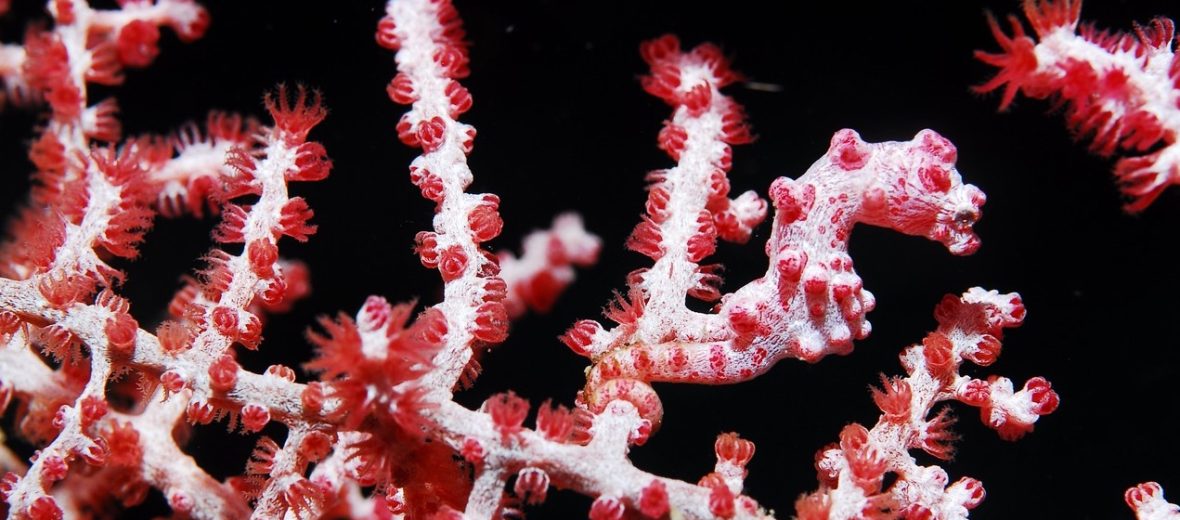
The pygmy seahorse hails from southern reaches of tropical Japan, throughout the Philippines, Indonesia, east to Palau, Papua New Guinea, Solomon Islands, Fiji, Vanuatu, and the Great Barrier Reef in Australia, to name a few locales. They prefer reef habitats with plenty of fan corals, gorgonian corals, or sea grass at depths of up to 295 feet. Largely unstudied, almost all the subspecies of pygmy seahorses are listed as Data Deficient by the IUCN. But they are under the threats of habitat destruction, pollution, climate change, and possible over-collection for the pet trade.
First the Stats…
Scientific name: Hippocampus
Length: Up to 1.06 inches
Lifespan: Up to 1 year
Now on to the Facts!
1.) There are 9 known species of pygmy seahorse: Bargibant’s, Denise’s, Pontoh’s, Satomi’s, Severn’s, Walea soft coral, Coleman’s, Japanese, and the Sodwana.
2.) These seahorses have characteristically short shouts, fleshy bodies & heads, and a long tail.
3.) They also have but 1 gill opening, not 2, like other seahorses, that is located in the back of their head.
4.) The female has a tiny, raised, round pore for depositing eggs and the male has a fore-and-aft slit for receiving said eggs.
5.) Like all known seahorses, the males rear the brood, not the females.
But wait, there’s more on the pygmy seahorse!
6.) There are 4 species of seahorses that are sometimes confused with the pygmies. However, they lack the single gill like pygmies. These are: Red Sea soft coral, paradoxical, bullneck, and Manaia.
7.) Some species of pygmy seahorse prefer to cling to sea grass, not corals.
Did you know…?
Seahorses are a species of agastric teleost, that do not possess a functional stomach. Therefore, their digestion takes place in their intestine. Due to this, they have to almost constantly eat.
8.) The seahorse has fused jaws that suck in food, like zooplankton, into tubular mouths.
9.) Males brood the eggs in their pouch for up to 2 weeks.
10.) When ready, the male releases up to 34 young seahorses that only measure up to .07 inch long, via strong thrusts of their body, which expel the juveniles from the pouch and into the water.
Now a Short Pygmy Seahorse Video!
Be sure to share & comment below! Also, check out the Critter Science YouTube channel. Videos added regularly!
Want to suggest a critter for me to write about? Let me know here.



